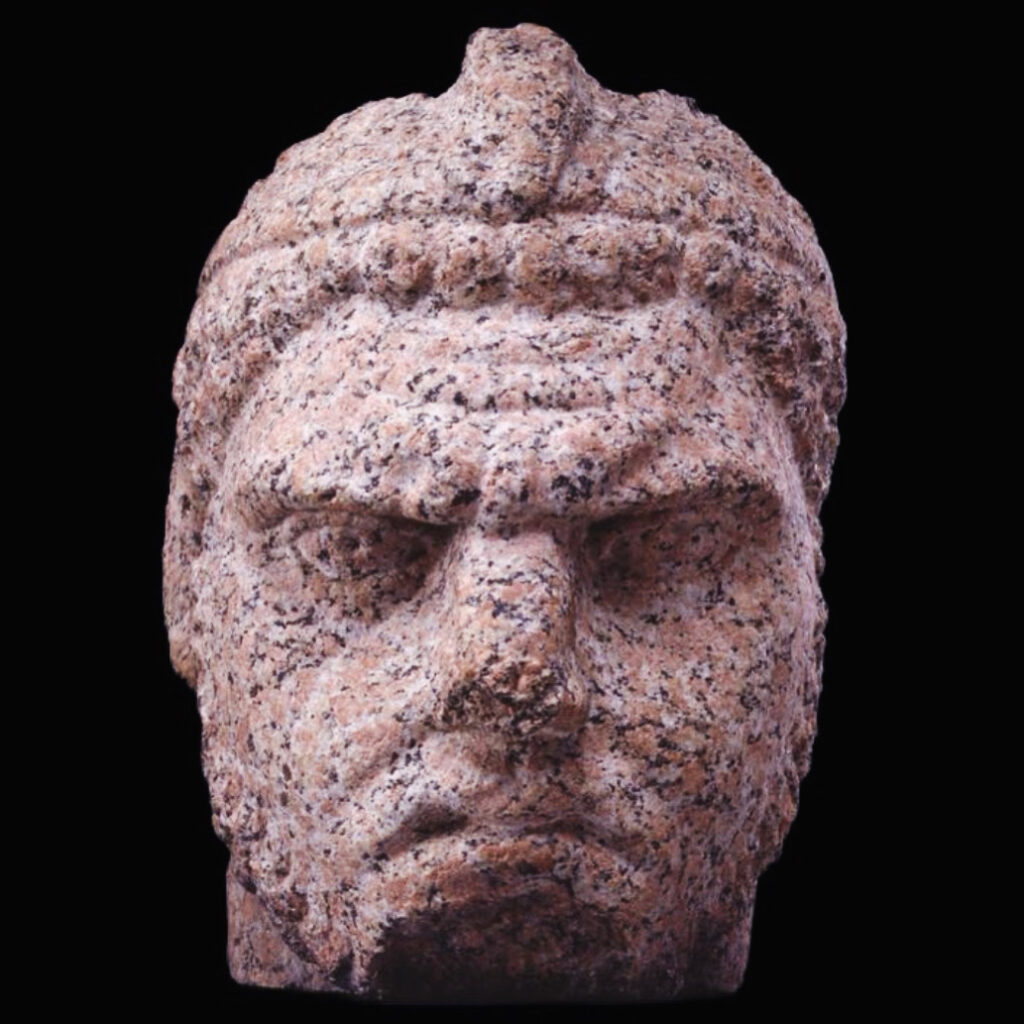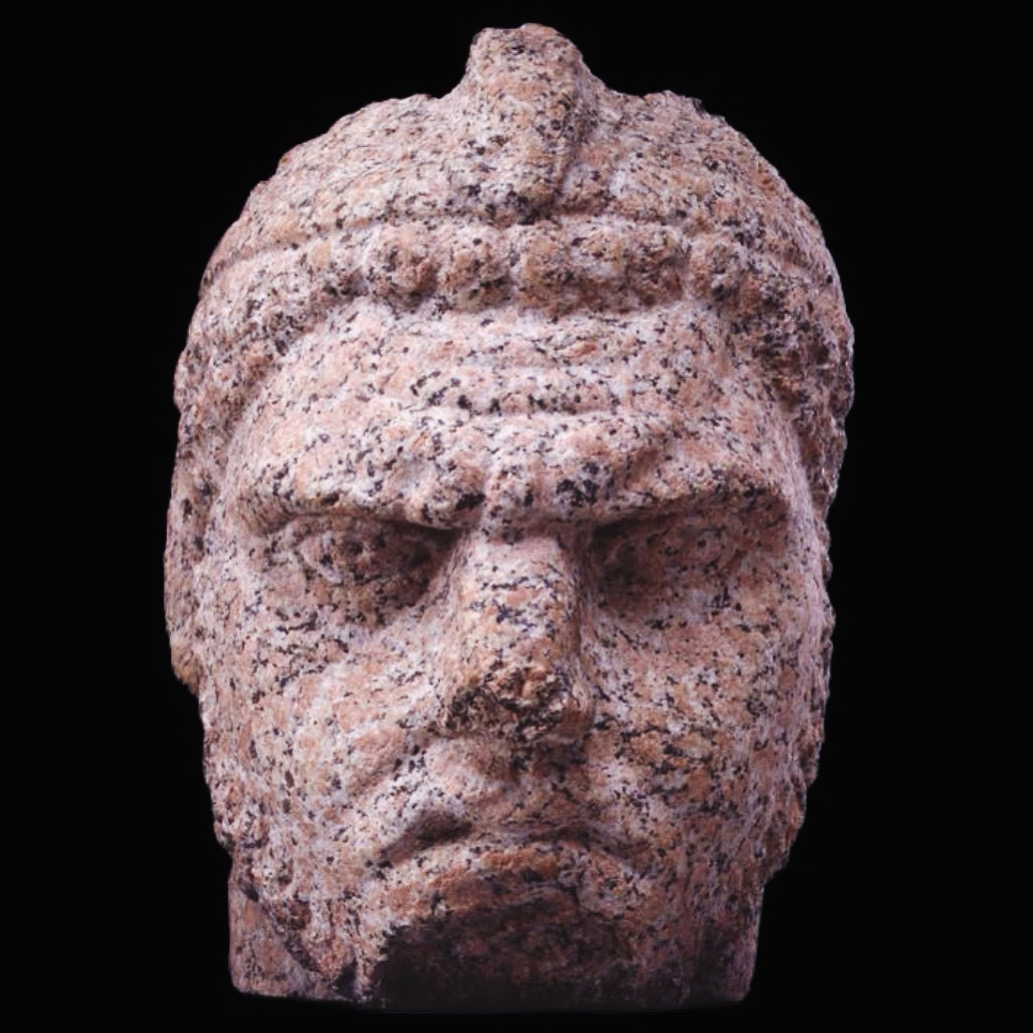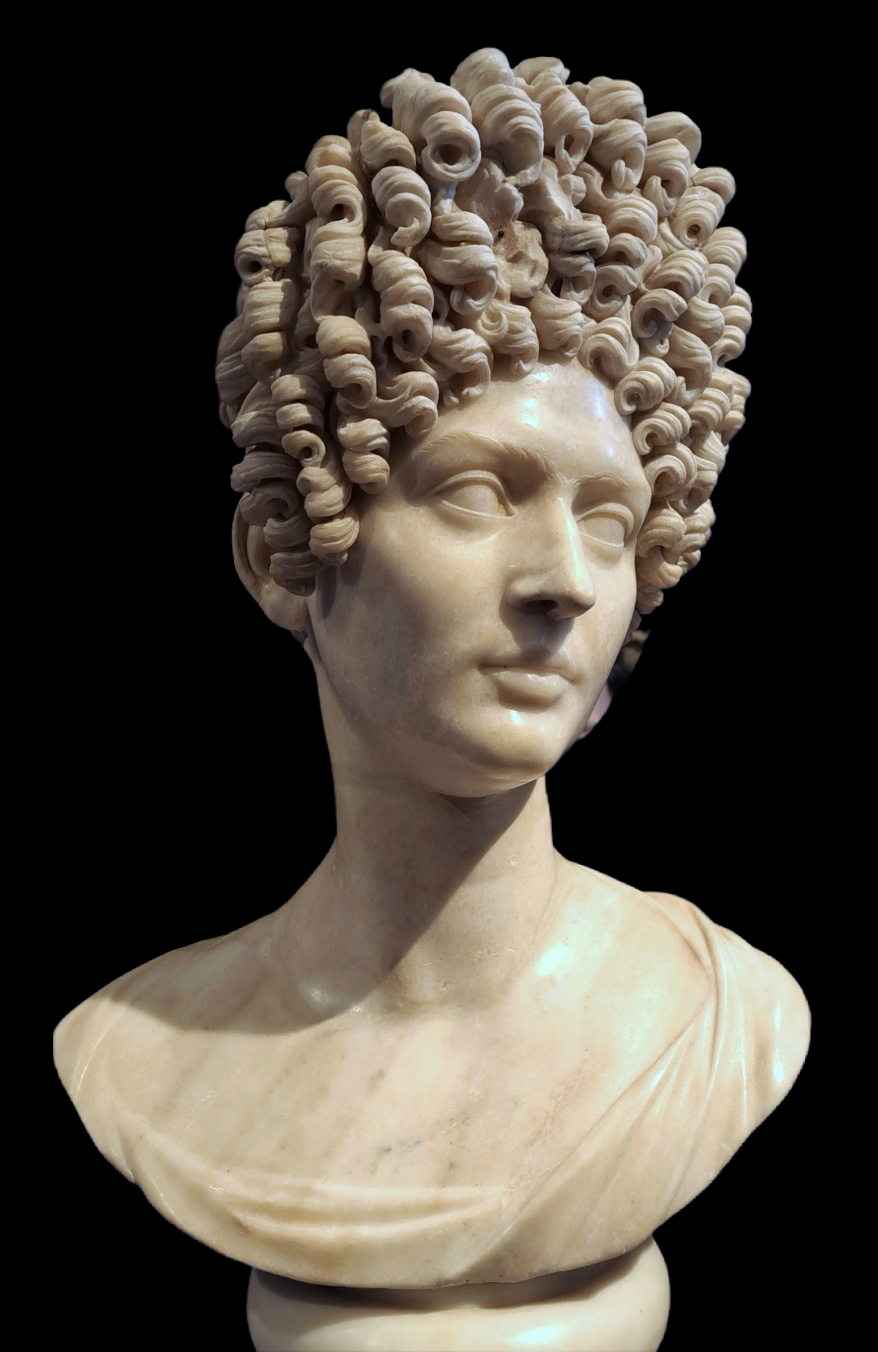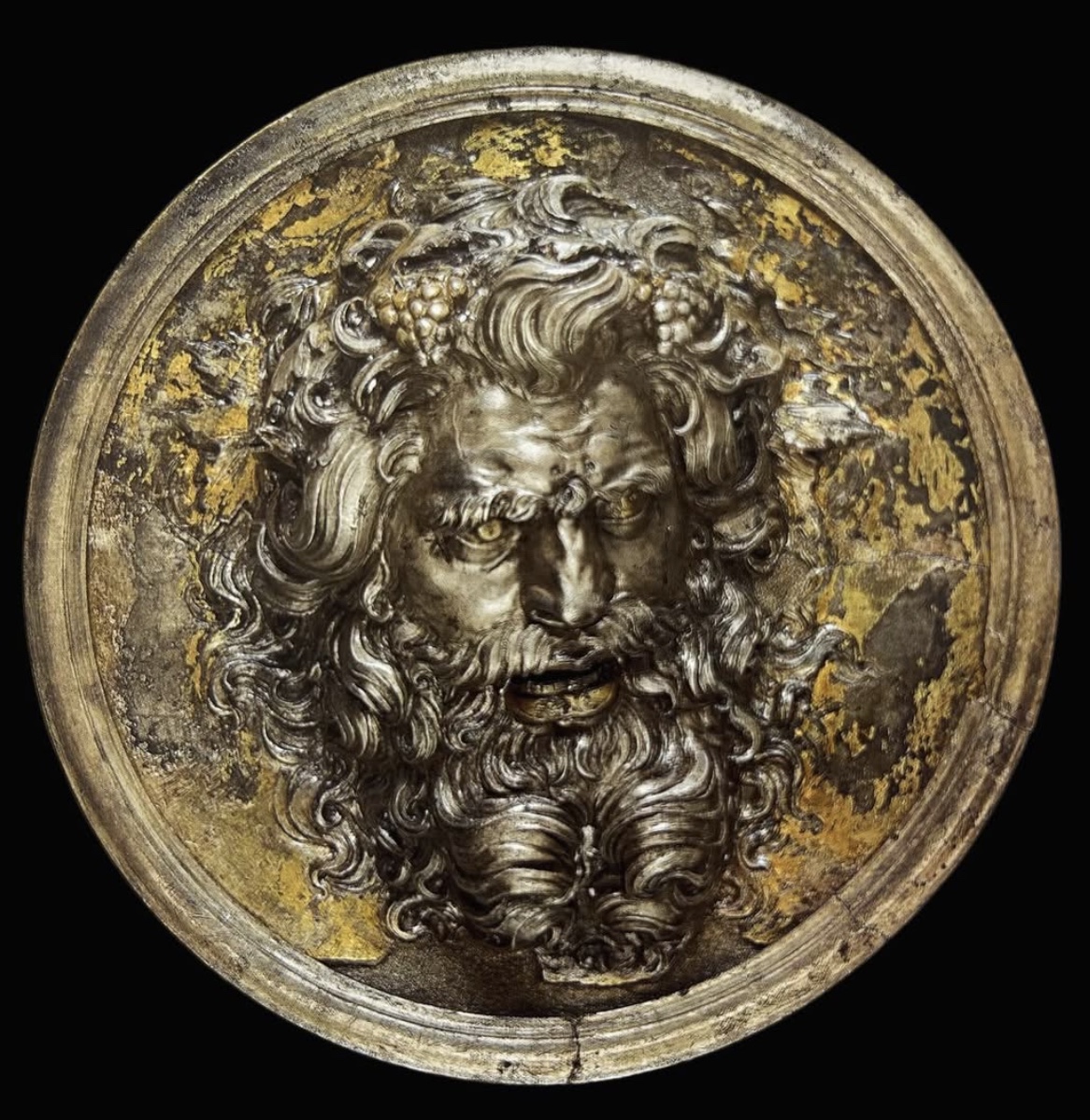The portraiture of Caracalla is some of the most striking to have survived from Imperial Rome. At its metropolitan best, the emperor’s portraiture features a dynamic turn of the head, a not unbecoming glower (with furrows upon his brow forming a sort of X at the center) and tightly cropped military haircut and stubble. It’s a powerful image.
This portrait of Caracalla is a whopper at over half a meter high, carved into diabolically hard pink granite, and excavated in the late 19th century Egypt at the Temple of Isis in Coptos.

All of this colossal pinkness and potential incorporation into Romano-Egyptian architecture is interesting. But what really gets me is the way his glamorous glower has transformed into an exaggerated grump. It is the result, perhaps, of trying to inflict convincing facial features onto an enormous hunk of mercilessly hard granite once perched quite high up. But his expression might also be characteristic of an official vision of the ruler disseminated and transmuted from far away artistic centers into the far-reaches of Rome’s vast empire.
Thoughts? Is it a visual ‘translation’ gone awry, a matter of architectural perspective, or just a nasty material to work with compared to buttery Luni marble?
(Semi-hoping to annoy some Roman portrait aficionados with this blabber, as usual)




